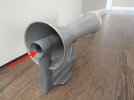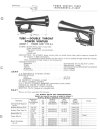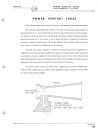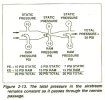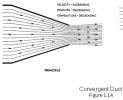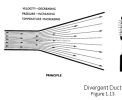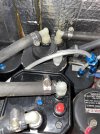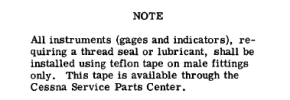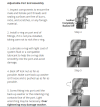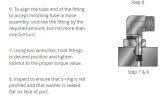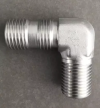- Joined
- Dec 5, 2010
- Messages
- 5,151
- Display Name
Display name:
GeorgeC
My plane has two venturis, one on each side. I've been hunting a low vacuum indication, on and off, since 2021.
My first questions were about basic stuff: filter, regulator, are the hoses ancient and cracked... I think they adjusted some things and it got better for a little while, but the issue eventually recurred.
I had a different shop look at it again this year. The vac gauge itself tested good. They replaced a cracked fitting on the back of the AI, but I still got a low vac indication on the flight back.
When I got home, I noticed that the (plastic) drain plug on the right side venturi was missing some paint and I could turn it by hand. From this, I concluded that they'd at least opened it up and looked at it.
The (aluminum) drain plug on the left side venturi had been painted over and was on good and tight. I don't think it's been off for 30 years. I removed the plug and cleaned it up.
I didn't have a flashlight to look inside for mud/dead bugs/etc. What's next? Bottle brush? Does it matter if the plugs are metal or plastic?
My first questions were about basic stuff: filter, regulator, are the hoses ancient and cracked... I think they adjusted some things and it got better for a little while, but the issue eventually recurred.
I had a different shop look at it again this year. The vac gauge itself tested good. They replaced a cracked fitting on the back of the AI, but I still got a low vac indication on the flight back.
When I got home, I noticed that the (plastic) drain plug on the right side venturi was missing some paint and I could turn it by hand. From this, I concluded that they'd at least opened it up and looked at it.
The (aluminum) drain plug on the left side venturi had been painted over and was on good and tight. I don't think it's been off for 30 years. I removed the plug and cleaned it up.
I didn't have a flashlight to look inside for mud/dead bugs/etc. What's next? Bottle brush? Does it matter if the plugs are metal or plastic?


